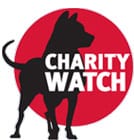Guest Blog: Continued from Here
By Matt Romeo
Communications
As part of the communications aspect of my internship, I got to dress-up as “Jeff the Diseased Lung” from HBO’s Last Week Tonight with John Oliver to protest the U.S. Chamber of Commerce’s relationship with Big Tobacco. I never imagined that I would dress up in a character suit and join in a rally this summer. I had a lot of fun dressing up as Jeff, but I also learned something from it. In order for a non-profit to be successful, it needs to come up with creative ideas in order to attract the attention of the public and get their message out.
By dressing as Jeff the Diseased Lung and going to the U.S. Chamber of Commerce, ASH and the Campaign for Tobacco Free Kids (CTFK) attracted the attention of hundreds of people who otherwise would have been ignorant to the Chamber’s role in blocking tobacco control legislation. Even though some of the bystanders did not fully understand all of the policy issues, at least they were reminded of the fact that smoking is bad for your health.
Creative campaigns like the Smoking Hot campaign or Jeff the Diseased Lung promote a non-profit’s cause by connecting with the general public in terms they understand. An effective and creative communications department plays a key role in the success of a non-profit.
Meetings and Presentations
In the second week of my internship, I had the privilege of attending a presentation by ASH’s Executive Director, Laurent Huber, and several other panel members at the Pan-American Health Organization Headquarters (PAHO), through the Global Tobacco Control Leadership Program at John Hopkins Bloomberg School of Public Health. The program focuses on how organizations around the globe can influence public policy makers and challenge interest groups that support the tobacco industry.
Since this was early on in my internship, I found a lot of the information quite complex for me to understand; however, I did take away one very important thing from the presentation. The fight against the tobacco industry truly is a unified global effort. There were representatives for organizations from Europe, Asia and North America, all expressing the same concerns about the damage done by the tobacco industry. All of them left with valuable knowledge to make a united effort against tobacco around the world.
I also got to observe some of ASH’s “strategic planning” for the next several years. The one overarching theme seemed to be that non-profits need to have a very clear and well thought-out plan for their future. In addition, I got to sit in on the weekly staff meetings at ASH. Like the strategic planning sessions, this is where the direction of the organization is determined, only on a smaller scale. Each staff member is given an opportunity to present on updates for their program, and then the staff talks about if they are headed in the direction they would like to be headed in.
NGOs have to ensure that each decision they make is cost-effective and worth the limited amount of time each staff member has. I thoroughly enjoyed attending these meetings, because it gave me a good insight into the direction of the organization. I learned a lot from attending meetings and presentations this summer. I left each meeting in awe of what people could achieve in just one short week and inspired to work harder.
Conclusion
What did I do this summer? I had the opportunity to learn about how a non-profit organization works through research, communications and attending meetings, all while serving the fight against Big Tobacco. I was able to develop a college campus divestment tool kit and comprehend all that goes into anti-tobacco work.
Best of all, I was able to learn and grow throughout my summer at ASH, thanks to a supportive and highly motivated staff. I had a great experience with ASH this summer, and as I go back to school, I will continue to stand with health and support ASH’s great work.








